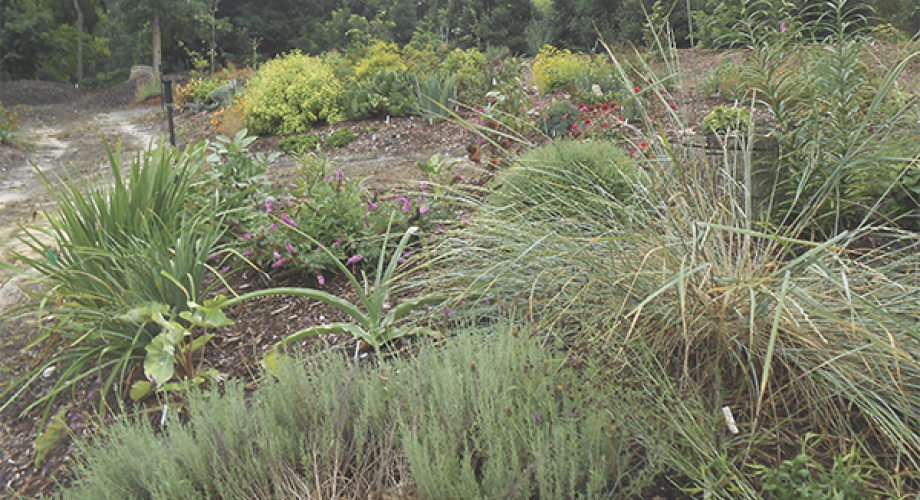Q: My rental property is 90% grass and very boring. I want to cut down on my water consumption and change the current look of the property. What do you recommend?
A: The single greatest consumer of water in your landscape is the turf. Reduce the grass area to ease the burden on water. Creating a drought tolerant landscape will change the appearance of the property and cost less money in water and maintenance. Xeriscaping is a term for a water conserving landscape. The benefits of xeriscaping are water saving, low maintenance, pesticide free, pollution free (no lawnmowers) and use of local native plants. Ornamental grasses, as they are drought tolerant, look great and give landscape a bit of vertical dimension. Succulents of course are great at conserving water. Flax and delphiniums are a few perennials to use. Marigolds, Mexican sunflowers, phlox and vinca passion are annuals that will work well. As for shrubs, look at Japanese black pine, mountain currant, sassafras, honeysuckles, etc., and good trees are acacia, gray birch, Monterey cypress, eucalyptus, fig, juniper Amur maple to name a few. Be sure to provide good drainage, and using plants native to the area is best.
Q: I have heard the term cool roof. I have an idea what it means, but can you expand on what exactly a cool roof is or means to my property?
A: As the cost of energy continues to increase, property owners are encouraged to find ways to save money on the cost of cooling their house, apartment or commercial building. Applying cool roof technology is a cost-effective passive way to reduce cooling costs.
A cool roof is designed to reflect more sunlight than a conventional roof, in turn absorbing less solar energy. This lowers the temperature of the building just as wearing light-colored clothing keeps you cool on a sunny day. Conventional roofs can reach temperatures of 150° F or more on a sunny summer afternoon. Under the same conditions, a reflective roof could stay more than 50° F cooler, reducing the thermal transfer of heat into the living space. A cool roof can shed heat or thermal emittance by giving off thermal infrared radiation. Unfortunately, a cool roof is also cool in winter, meaning the roof will transmit less heat into the living space, which may increase heating costs because of less thermal transfer.
Do you have DIY maintenance questions? Send them to [email protected].
